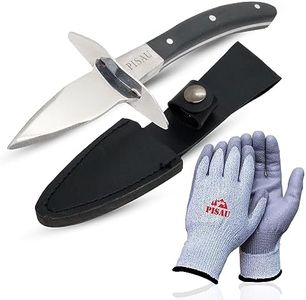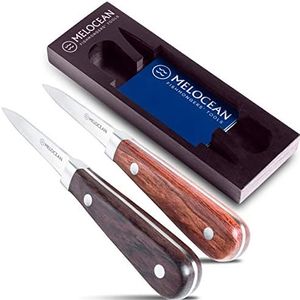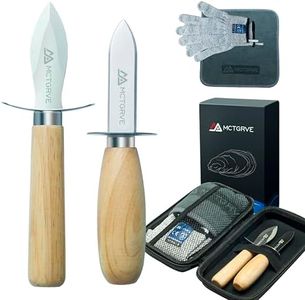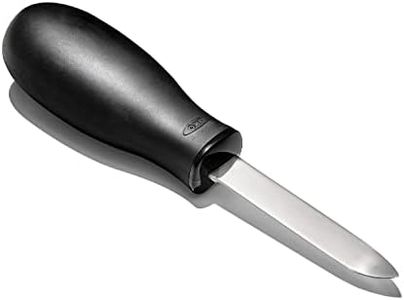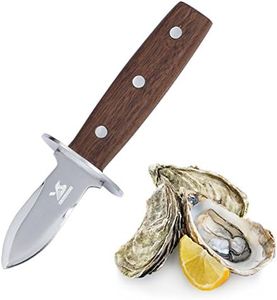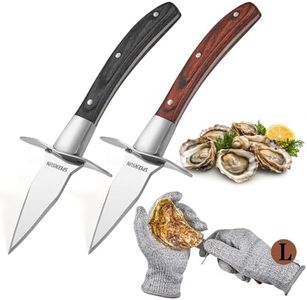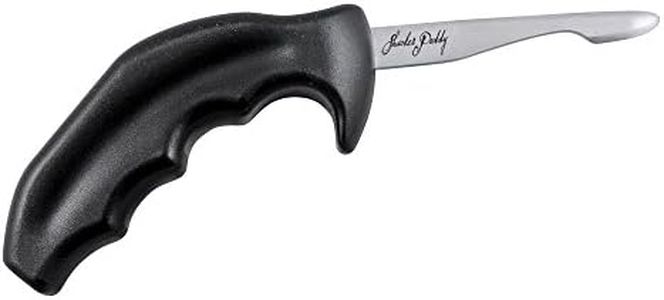We Use CookiesWe use cookies to enhance the security, performance,
functionality and for analytical and promotional activities. By continuing to browse this site you
are agreeing to our privacy policy
10 Best Oyster Knives
From leading brands and best sellers available on the web.Buying Guide for the Best Oyster Knives
Choosing the right oyster knife is important for both safety and efficiency when opening oysters, whether you're an occasional home seafood lover or a regular entertainer. The right knife will protect your hands, make shucking easier, and help ensure the oysters stay whole and delicious. When shopping for an oyster knife, considering its main features will help you find a tool that matches your typical use and comfort level.Blade Type and ShapeThe blade of an oyster knife is usually short, thick, and either rounded or pointed at the tip. This spec is important because different shapes are designed for different oyster varieties and shucking methods. Pointed tips are best for hard shells and can help penetrate the hinge, while rounded tips offer extra safety and are good for softer shells or beginner shuckers. Choosing the right blade type depends on the kinds of oysters you plan to open and your level of experience—go for a more pointed tip for tricky, hard shells and a blunt tip if you prefer a safer, slower approach.
Blade LengthOyster knife blade lengths generally range from about 2 to 4 inches. This measurement matters because a longer blade can give you more leverage, but may be harder to control, while a shorter blade is great for small oysters and extra precision. For general home use and mixed oyster sizes, a medium-length blade is a good all-round choice. If you focus on larger oysters or need more force, a slightly longer blade could be helpful; for smaller or East Coast oysters, a short blade offers better control.
Handle Comfort and MaterialThe handle is crucial for both comfort and safety. Handles can be made of wood, plastic, rubber, or composite materials, each offering a different grip and feel. A comfortable, non-slip handle reduces the risk of slipping and injury. If you open a lot of oysters at once or have weaker grip strength, prioritize a thick, ergonomic handle. If you occasionally shuck and want easy cleaning, look for plastic or rubber that’s less likely to absorb odors and is easy to sanitize.
Blade MaterialOyster knife blades are most commonly made from stainless steel because it resists rust and corrosion, especially important when working with salty oysters. Some knives use high-carbon steel for extra strength, but these can require more care to avoid rusting. In general, stainless steel is a reliable choice for most users, while those who appreciate a sharper or more traditional blade might prefer high-carbon steel with regular maintenance.
Blade FlexibilitySome oyster knives have very stiff blades, while others have a bit more give or flex. Stiff blades are safer and more effective for wedging into tough shells, while blades with a little flex are better for those who need to slide along the shell to release the oyster cleanly. If you’re new to shucking, a stiffer blade is often safer; if you want to preserve perfect oysters for presentation, a slight flex can help with delicate maneuvering.


